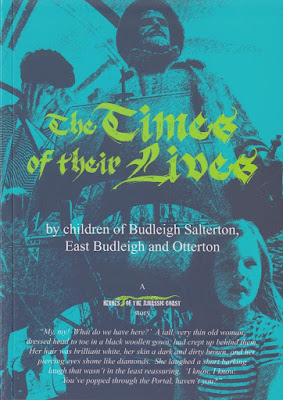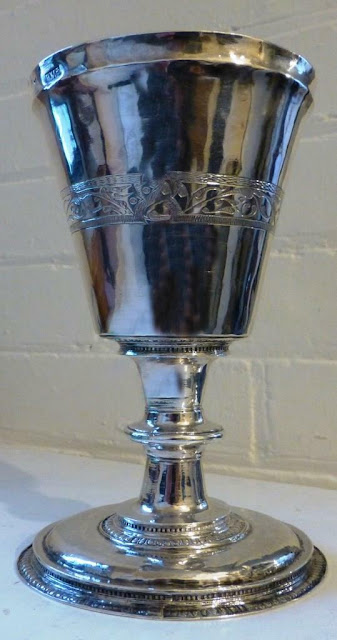Welcome to a Nottingham visitor from Fairlynch Museum. The city of Nottingham: a montage. From top left: Robin Hood, Council House, NET Tram, Castle Rock Brewery, Trent Bridge, the Castle Gate House, Wollaton Hall , Ye Olde Trip to Jerusalem and Nottingham Forest's City Ground
Image credit: M.M. Pawell
During a meeting at the museum the other day I was interrupted by a request that I should help a visitor, a journalist on the Nottingham Post who needed some information. She’d been directed to Fairlynch as the only place which might provide it.
The visitor apologised for disturbing me, especially as the museum was not officially open. But she was unable to call in the afternoon during opening time, and had come all the way from Nottingham to Budleigh Salterton in search of what she described as “the ladies of the Raj.” An Indian professor from Bristol University whom she’d recently met in Sidmouth had recommended Budleigh as theplace to find them.
Budleigh’s Tourist Information Centre had been unable to help her, and I was at first puzzled as to where the exotic creatures might be hanging out in our little town. The only lady from the East I could think of was the Big Issue seller that you sometimes see settled in her usual place on the pavement in Budleigh’s High Street.
Interesting pics to illustrate my biography of an interesting Budleigh man
And then I realised that I was facing the shelf of publications in our museum shop where my little booklet about Henry Carter FRS is still for sale.
Pictures of Victorian India began to float back into my mind: steamships puffing past a confusion of minarets and impossibly grand imperial palaces, horribly diseased limbs confronting the young Budleigh-born army surgeon, his travels across the Arabian Sea…
Banganga Tank and Walkeshwar Temple, Bombay: a photo of c.1855
...and especially the ‘tanks’ of Bombay as they were known: reservoirs of what must have been fairly fetid water supplies for the 19th century city, where Carter discovered the microscopic creatures whose tiny lives would inspire him to become the world’s expert on marine sponges.
But Henry Carter remained unmarried during his time in the sub-continent. Only on his return to England in 1862, and having settled back in his “native place” did he take a wife. And she was from Ireland rather than India.
Still, I was sure that my visitor would find something of interest in The Scientist in The Cottage, and as it was only £2 she bought a copy on the spot.
And then it suddenly struck me: one of Budleigh Salterton's best known artists, Joyce Dennys, had been born in India, in 1893. Her father was a professional soldier in the Indian Army. A good selection of her paintings can be seen at Fairlynch.
And George Carter - pictured above - local amateur archaeologist and father of the co-founder of our little museum had spent many years working in the sub-continent.
Priscilla Hull, co-founder of Fairlynch Museum, whom I tried to introduce to Facebook
His daughter, Priscilla, after whom the Priscilla Carter Room is named, had been born in Bombay.
So had the artist Cecil Elgee, illustrator of the book Costumes and Characters in the Days of the British Raj, which appeared in 1982.
On 14 February 1980 she gave a Winter Talk on this very theme to the Friends of Fairlynch. The pictures that she showed of her time in India caught the eye of Richard Webb at the Exeter-based firm of Webb & Bower, co-publishers of the immensely successful Country Diary of an Edwardian Lady.
The novelist R.F. Delderfield (1912-72), a one-time local resident, enjoyed poking fun at Budleigh Salterton’s ex-pats from the Raj. In his autobiography, Nobody Shouted Author, he amusingly explains how our town’s popularity originated in the 19th century, referring to it by the invented name of Pebblecombe Regis.
A "battle-scarred colonel", so Delderfield would have us believe, was sipping his whiskey-peg in a Bangalore club a year or two after the Indian Mutiny. He was just about to give his attention to an article about a justifiable massacre of Sikhs in a month-old service periodical when his eye was caught by a letter from the preposterously named Major Bullington-Headrush CMB, writing from "The Stockade, Pebblecombe Regis.”
Firearms are making poltroons of us all, reads the Colonel, with what Delderfield describes as "a kindling eye."Let us accept the challenge of the hairy savage and trounce him with his own weapons! What has happened to the bowmen who cut up the French at Crecy and Agincourt!
And the Major ends with a question which fires his reader with the desire to meet and congratulate such a "dam' sensible feller." Where are the yews that supplied our bowstaves and for so long were a compulsory adornment of all our churchyards?
Delighted by this "challenging appeal for the reintroduction of the longbow into our national armoury" the Colonel straightway writes a letter to Pebblecombe Regis enquiring about vacant houses in the immediate neighbourhood, having decided that a Major with such admirable views would make an excellent neighbour when he retired in two months' time.
Few local homes, if any, can boast tiger skins nowadays. In the past they would have been part of the décor in many of the homes of Budleigh’s Anglo-Indians
According to Delderfield, the Colonel was soon followed by many of his friends and colleagues. "It wasn't so long after that one began to see masses of iron-bound trunks, together with bundles of rusty assegais, Afghan firelocks, snarling tigers' heads and tarnished Benares wares piled on the quays of Calcutta and Bombay, stuck all over with labels marked: 'Poona to Pebblecombe Regis', 'Quetta to Pebblecombe Regis', 'Cawnpore to Pebblecombe Regis', and so on, whilst Pebblecombe Regis itself began to take on the aspect it wore right up to the end of the Second World War."
"At any time between 1860 and 1945,” continues Delderfield’s account, “the High Street of Pebblecombe Regis could easily be mistaken for a European quarter of a garrison town. Anglo-Indians, with hard, blue eyes, fierce moustaches, and mahogany faces, literally rubbed shoulders round the fishmonger's slab, whilst their womenfolk, with that total disregard for eavesdropping characteristic among the wives and daughters of professional soldiers, exchanged bits of gossip across the main street, at the tops of their voices."
Portrait of Thomas Shapter in the Royal Devon and Exeter Hospital
The real reason why Anglo-Indians settled in this part of East Devon was of course its wonderful weather. Budleigh Salterton was specifically mentioned in Thomas Shapter’s The Climate of the South of Devon : And Its Influence upon Health, with Short Accounts of Exeter, Torquay, Babbicombe, Teignmouth. An edition was published in 1862, the year in which Henry Carter returned to his home town.
A near-contemporary of Henry Carter, Dr Thomas Shapter (1809–1902) was born in Gibraltar, graduated from Edinburgh University, and arrived in Exeter in the year that cholera arrived. Today, Dr Shapter is best known for the account that he wrote of this devastating outbreak in his The History of the Cholera in Exeter in 1832. Apart from the two above works he also published Leprosy in the Middle Ages
Interestingly, Shapter’s book on the climate of South Devon is dedicated to Edward Parfitt, Librarian of the Devon and Exeter Institution and a friend of Henry Carter.
Recently I was surprised to see‘Shapter on the Climate of Devon’ as a book proposed for disposal from Fairlynch Museum’s George Carter Library. No proper author’s name was given, and there was no date of publication. Thomas Shapter’s 1842 edition of the book sold at Bonhams in 2008 for £54.
I stepped in quickly to save this classic study by a noted Exeter doctor.
My surprise turned to annoyance when I also noticed that Mrs Temple-Wright’s Domestic Manual for India had appeared on the ‘Disposal’ list. Published in 1896, it was a classic of its kind, went through several editions and is frequently quoted by modern scholars of Anglo-Indian history.
Such books should obviously be among the items in the Museum’s Local History collection of artefacts and memories based on the important Anglo-Indian connection which is part of the Lower Otter Valley’s heritage.












































